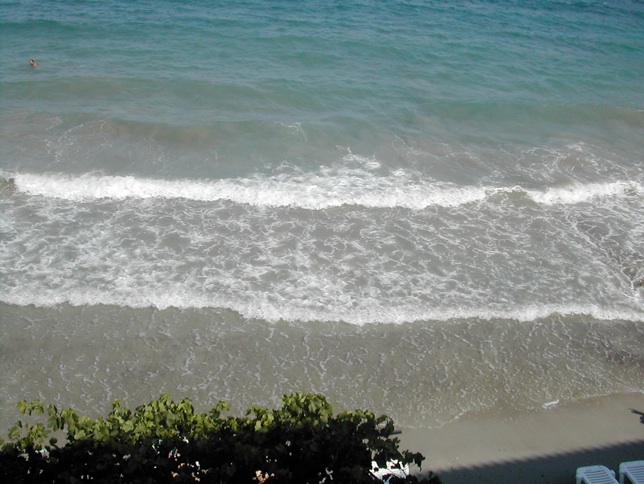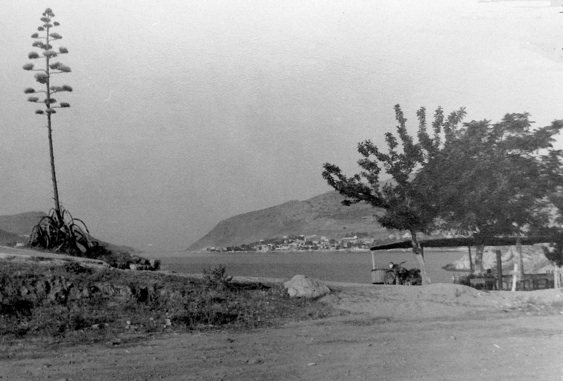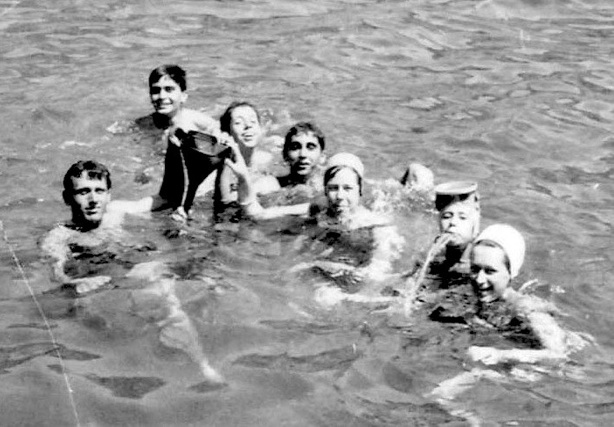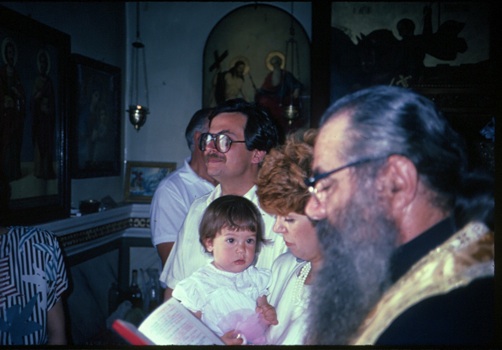For the Paraschos family and us Athenians, in general, life has always been easy in Tolo-- we ‘d get up at 7-8 a.m. and go to the fournos (bakery) for a loaf of multi-grain village (“horiatiko”) or whole-wheat (“olikis aleseos”) bread. (Tolo’s bread has always been outstanding and we used to bring some home with us.) As Janet and later our children Sophia and Alexi entered the picture, I’d occasionally get them Greek doughnuts, chocolate-filled croissants or a bougatses.

These days, we’d have lunch at around 2 p.m. either at Petros’, Maria’s or kyr-Thodoros’ Arkadia restaurant next to Nelly’s on the beach. Between 3-5 p.m. we’d take naps. The Tolian afternoon naps have always been “sweet” as they were aided by a fine “pounentes” wind that comes daily between 2-5 p.m. and stirs up the waves (right). Although summer temperatures are in the 90s, the lack of humidity and the wind always made it feel much better.
In the early days, evenings started with coffee or a pastry. Sometimes we’d go fishing at the beach or at the skala. Today, mostly we go to Nafplio where there are many more things to see and eat--it’s a 15-minute car ride or 30-minute ride by a bus packed with tourists. Other options included walks along the beach, to “town,” through the main street (Sekeri street), or to Sophia’s baptismal church, Panagia’s in Kastraki.

If the Tolian kids’ kaikia were available, they would take us (in the dark) around Koronisi and even stop and climb its rocks looking for the wild pigeons. On full-moon nights we’d swim by the Petros’ hotel.
The village movie theater, Cine Tolo, located on the beach half of today’s Gorilla’s Bar, was a riot. Old films, mostly Greek, or the projector would often break during the show and would restart half an hour later, in the midst of a lot of friendly boos…
Early Tolo’s quietude would be broken by the buzzing sound of Mr. Marketos’ remotely controlled fabulous model airplanes that would fly above us. Loudspeakers of fruit and household-good vendors, along with megaphone of Cine Tolo’s truck, would add to the cacophony of the village.
The first modern villa, Pipina, was that of the Kodellas family in midtown. In the ‘90s it was torn down and replaced by the Doukas supermarket, which was to compete with Louloudakis. It lasted a few years but it has been replaced by a new store.

Tolo life has been full of routines whose repetition is relaxing and has provided a comfortable historical continuity and social context for the Paraschos family over the years. But there were unique moments that cannot be forgotten:
--Akis was stung by a bee on the upper lip and an allergic reaction puffed up his face and necessitated a trip to the Nafplio hospital. He survived.
--One unforgettable August 26, Argyris Papadakis used his truck to take us to the panygiri (fair) of nearby St. Adrianos. After pig on the spit and retsina, we returned to Tolo early the next day banging on the footbed of the truck making all sorts of noise. My mother was not amused.
--In July 1977 Petros experimented with adding a coffee/pastry shop to the hotel. My mother (Kyria Fifi), Janet, Soula, Akis and Terry all helped set up the tables to get the store ready.The village priest performed the agiasmos (blessing). The “new” place was still called “Gold Fish” and it featured the great pastries of Nafplio’s Koustenis.

--In 2001, Janet’s family, the Nybergs, held their family reunion in Tolo. More than 20 of them (from California, Wisconsin, New York and Massachusetts) occupied half of Petros’ hotel and ate our meals at Maria’s. Tassos and a group of taxis drove us to Mycenae and Epidaurus. One day the group took the Pegasus boat to Spetses and Hydra. They had a ball.
--In 1960 or 1961, Onassis’ yacht Christina came to Tolo Bay carrying Winston and Clementine Churchill. We rowed to it, most likely in Patalas’ row boat, and started asking questions of the crew. Soon we were invited up and we met the Churchills, who were in their 80s. After that I phoned the story to “Ethnikos Kirix,” the Athens daily for which my father worked.